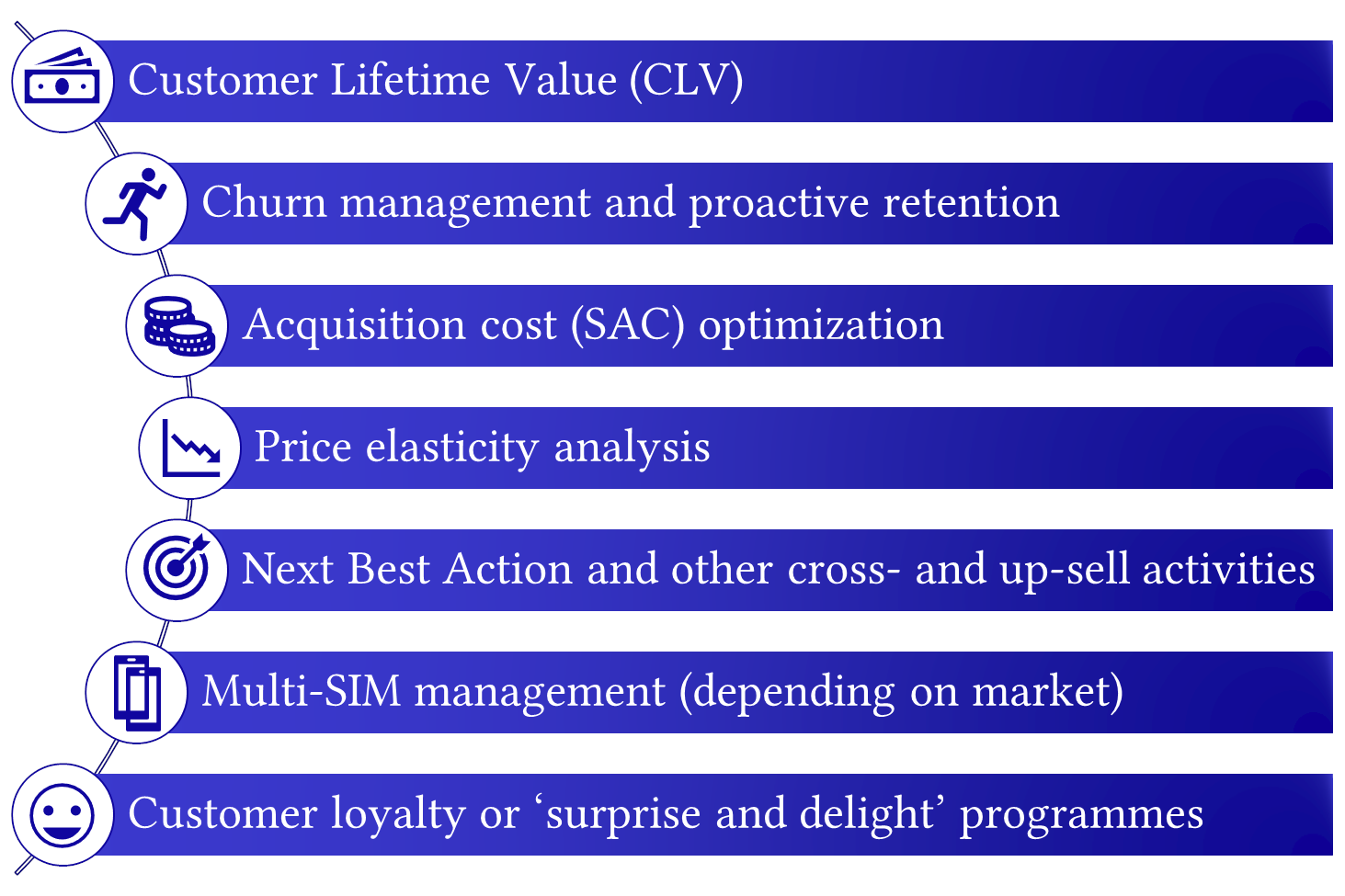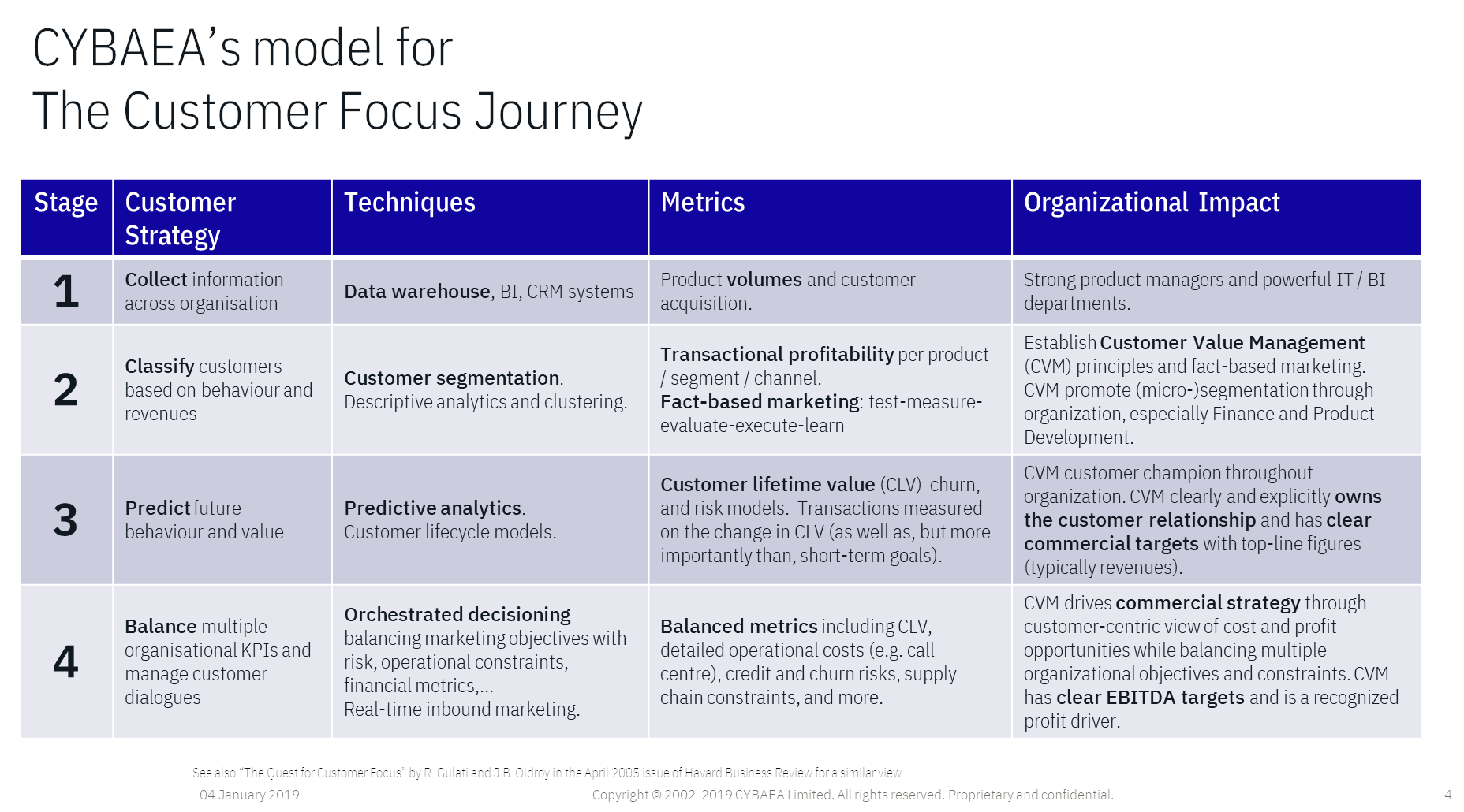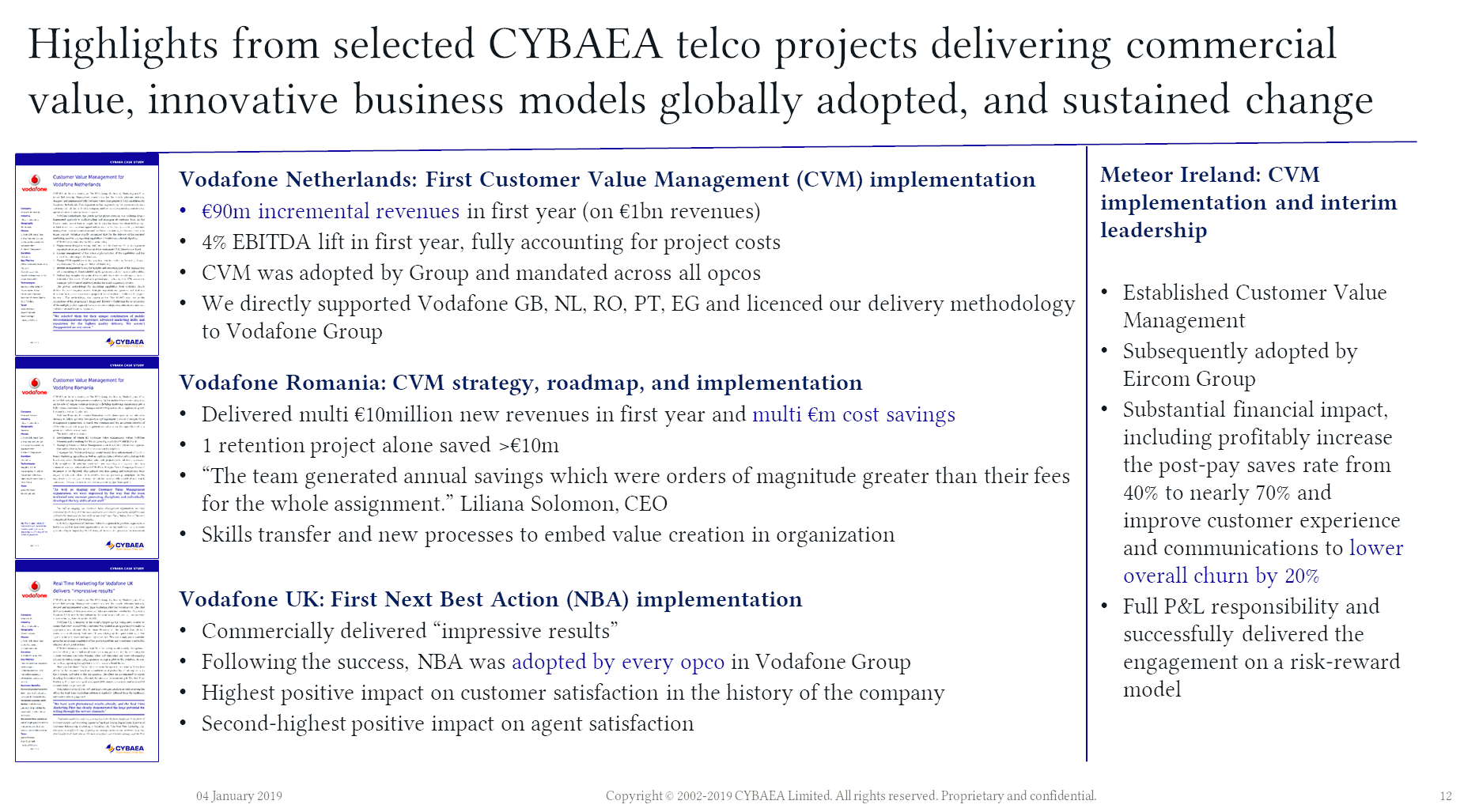Customer Value Management (CVM) is an integrated approach to creating truly profitable customer relationships. It is an original concept that we developed first with Vodafone Netherlands before taking it to the rest of the Group and across the mobile industry where CVM is today the standard.
The history
In 2005 the company was in crisis: gross margins had dropped below red lines for what was considered acceptable profits in developed Western markets and no one really had a new idea for how to change when we were brought in to help.
The diagnosis was not difficult: for decades the mobile industry had relied on acquisition to fuel growth and deliver results. Get new customers in at a faster rate than you lose them and focus all your efforts on acquisition marketing, primarily advertising and promotions.
In a mature market, focusing solely on acquisition was no longer a profitable strategy.
This strategy works in a new growth market. But with mobile phone penetration having exceeded 100% it was no longer viable. All that was happening was that the main mobile companies were offering ever larger discounts to attract customers from each other.
We encouraged them to think about their customer base as an asset. Considering how much money they spent acquiring, retaining, and growing their customers easily puts the existing customers in the top-5 assets by value, which is true for most organizations.
‘So,’ we asked, ‘who is responsible for the customer base: who owns the P&L accountability? Can you name his or her name?’ More interestingly: what would it take for someone to truly own the P&L of the customer base? What metrics need to be in place, what organization, what kind of people with which skills and following which processes? What technology and infrastructure supports them?
From this we built the concept of Customer Value Management (CVM) and implemented it first at European telcos and then took it to other industries and geographies. Now, every telco has some form of CVM and it is common in many other enterprises, especially those with repeat purchases or subscriptions.
How to do it
If the idea sounds abstract and complicated, rest assured it is not. Focus on the customer, use data and facts, and apply the scientific method for your reasoning. The journey may be different depending on where the organization is now, but the elements will typically include the following.

Customer Lifetime Value: start simple and build a customer lifetime value (CLV) model. Revenues less direct acquisition costs less direct cost to deliver product less operational expenditure (opex) allocation will be plenty to get you started. Talk to us about how to get started in an afternoon.
When we implemented Customer Lifetime Value at Bupa Global we were surprised to find that our Individual private customers were by far the most profitable segment while Corporate customers overall had a negative profitability! As a result, we transformed our strategy to service and attract more Individual customers while we exited large parts of the Corporate market to bring that book back to profitability.
Churn management and proactive retention aims to identify customers that are likely to leave and then make them a targeted offer to stay. Consider four groups of customers for this:
Lookers: Those that were going to leave, but stay with a proactive retention offer. Good.
Lovers: Those that were not going to leave, but accept the proactive retention offer – therefore expending costs unnecessarily. Bad.
Haters: Those that have decided they are going and do not accept your offer.Bad.
Asleep: Customers that are woken up by the proactive contact – may either become Lookers or Lovers. These can also remain asleep.
Other techniques include acquisition cost (SAC) optimisation, price elasticity, Next Best Action and other cross- and up-sell activities, multi-vendor management (multi-SIM management in mobile telcos), loyalty programmes and more.
The typical journey to customer focus is illustrated below.

What we have done
We have led 11 mobile opcos across 7 operators on their journey to data monetisation and customer focus. We have had both line management and consulting experience and held P&L responsibility for data and insights.
We speak data, commercials, and customers. We bring deep practical experience and enjoy ‘getting our hands dirty’ to deliver not just vision slides or mathematical theorems but measurable commercial results.

Contact us today
Contact us today and learn how you can create lasting and profitable customer relationships.